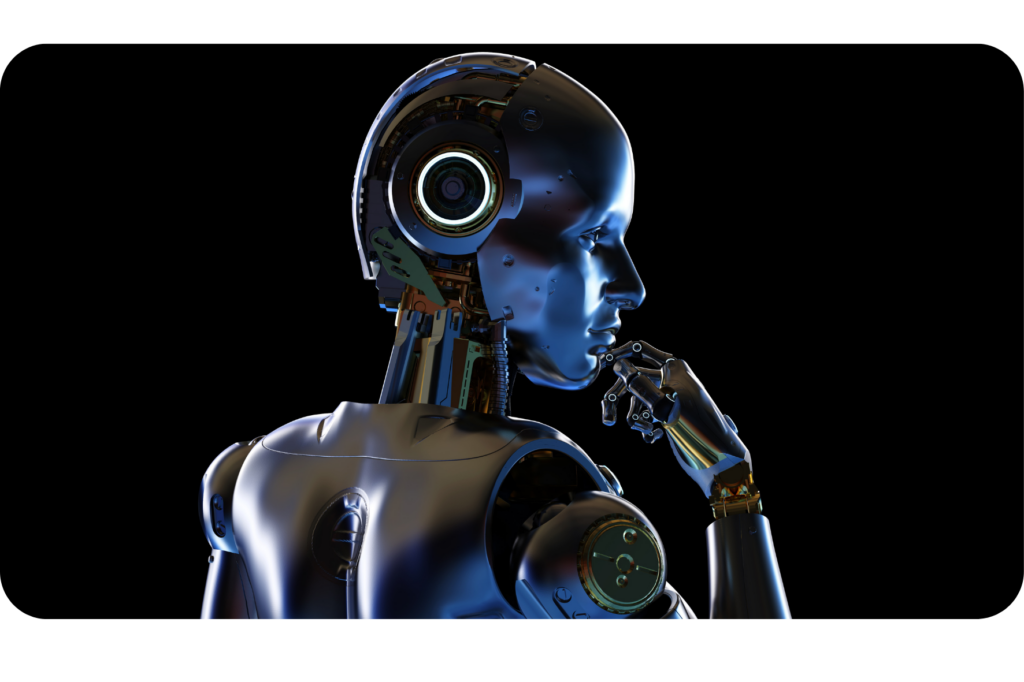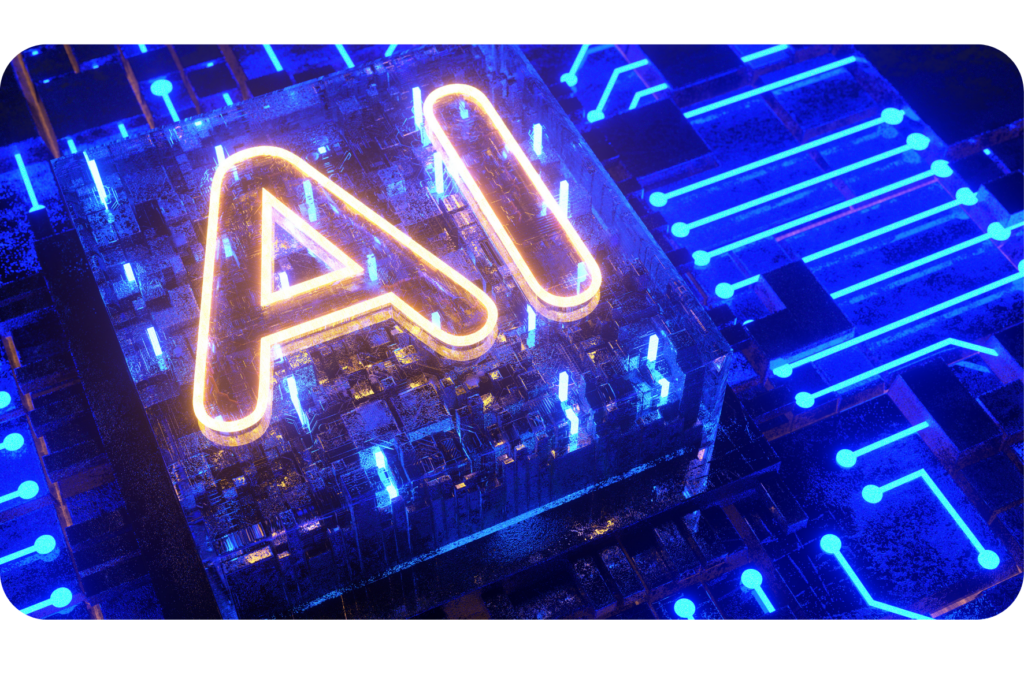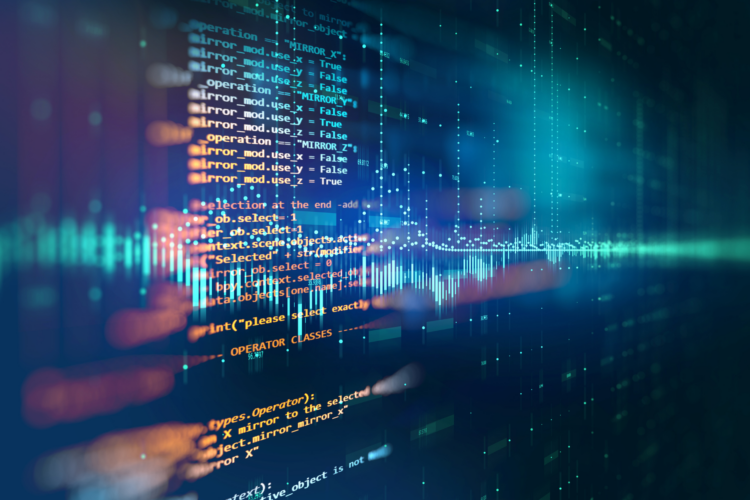The importance of AI programming languages in today’s digital world cannot be overstated, especially with the increasing prevalence of AI technologies.
These languages serve as the building blocks of creating AI, allowing machines to perform tasks that were once only possible for humans. In addition, they are crucial in developing algorithms, models, and AI solutions that drive innovation and growth for companies across all industries.
In this blog post, we’re going to explore the significance of languages for AI. We delve into the specifics of various programming languages, understanding their purpose, strengths, and how they’re used in crafting advanced solutions.
AI Programming Languages Explained

AI programming languages are crucial in the field of AI. They form the foundation of AI systems, allowing developers to build algorithms, machine learning models, and natural language processing. But what exactly are these languages?
AI programming languages are powerful tools that empower software developers to build intelligent systems.
The best languages of AI are specifically designed to handle complex computational tasks, manage data sets, and incorporate algorithms that enable machines to learn and decide. AI language models also simplify the AI solutions development processes and offer tools and frameworks to bring technologies to life.
So, what sets apart traditional programming from AI programming languages? While traditional programming languages are versatile and used for various software development services and applications, AI programming languages are specifically designed for AI development. This type of development includes:
- Statistical analysis
- Data science
- Machine learning
- Deep learning
- Natural language processing
AI programming requires a different skill set compared to traditional programming. It often requires a solid foundation in mathematics and statistics, as well as understanding AI principles.
If you’re interested in developing AI easily, you’ll need the best talent. At Vanguard-X, we offer your senior talent experienced in AI software development services that meet your business goals. Feel free to reach out if you’re looking for AI solutions tailored to your needs.
In essence, AI languages are not just tools but also catalysts that drive innovations in technology. As you understand their purposes and capabilities, you’ll be able to appreciate their potential in shaping an AI-driven future.
Want to dive deeper into the best AI programming languages? Let’s discover the array of languages available today!
Coding AI: 2023’s 5 Most Popular Languages

Are you still wondering what language AI is written in? Let’s take a closer look at the most popular programming languages used globally by developers and data scientists in the field of AI.
1. Python
Python has emerged as a popular language in the AI community because of its simplicity, versatility, and extensive collection of libraries. Its readable syntax makes it an excellent choice for beginners and experts in AI software development.
Additionally, key libraries such as TensorFlow and PyTorch have made Pythong a go-to language for machine learning, deep learning, and artificial intelligence with Python. These libraries also provide pre-defined functions and structures that make the process of creating an AI easier.
Python’s versatility extends beyond applications to image recognition and natural language processing since it’s been used in mobile development services, thanks to frameworks like Kivy and Beeware.
2. R
R is another popular language known for its robust capabilities in statistical analysis and data science. This makes R ideal for exploratory data analysis and visualization. R also shines in machine learning, allowing for quick model building and evaluation. Its applications comprehend predictive modeling, statistical analysis, and data mining.
3. Julia
Julia is gaining traction in the AI community because of its high-performance numerical and scientific computing capabilities. In fact, this language combines speed and the ease of use of Python.
What is Julia’s strength in comparison to Python and R? Its strength lies in its ability to execute complex mathematical operations quickly and efficiently, which makes it ideal for large-scale machine learning and deep learning tasks. Likewise, Julia can be applied to image processing and signal processing in computational biology and robotics.
4. Java
Java remains the cornerstone of the programming world and plays a crucial role in AI development. Its platform-independent nature, strength, and scalability make it great for AI systems.
Java also provides numerous libraries and frameworks for machine learning and AI, such as:
- Weeka
- Deeplearning4j
- MIA
Moreover, Java seamlessly integrates with big data processing frameworks such as Apache Hadoop, making it the preferred choice of data scientists for big data projects.
5. C++
C++ has a rich history intertwined with AI and robotics. Known for its efficiency and control, C++ is widely used for demanding AI applications that prioritize performance. It excels in areas like autonomous vehicles and cutting-edge gaming, where quick responses are crucial. C++ shapes the tech landscape, unlocking possibilities in the ever-evolving world of AI and robotics.
3 Best AI Programming Languages Languages and Tools
In addition to the traditional programming languages that prevail in the AI landscape, there are specialized languages and tools that have carved out their own niche. Let’s explore deeper into three unique languages and explore two popular frameworks: Prolog, Lisp, TensorFlow, and Keras.
1. Prolog
Prolog, or Programming in Logic, is a high-level fourth-generation programming language primarily associated with AI and computational technologies. Its logic programming paradigm makes it uniquely suited to tasks involving knowledge representation and rule-based reasoning.
In Prolog, a program is defined by a set of rules and facts. The programmer uses these to answer queries through logical deduction. This makes prolog ideal for creating expert systems, natural language interfaces, and other AI applications that require complex logic.
2. Lisp
Lisp is one of the oldest high-level programming languages and holds a special place in the history of AI. It was the language of choice for early AI research because of its expressive syntax, flexible semantics, and interactive development environment.
Today, Lisp provides numerous libraries for AI programming and a wide range of capabilities, from machine learning algorithms to NPL tools. Additionally, Lisp’s strength lies in symbolic processing, becoming a powerful tool for AI applications. Lisp is generally used for creating intelligent chatbots or developing AI systems for video games.
3. TensorFlow and Keras
These frameworks have completely revolutionized the AI environment, making it more efficient. TensorFlow, developed by Google, is an open-source library for numerical computation and large-scale machine learning. It offers a flexible architecture and can be used in desktops, mobile, and edge services.
Keras, on the other hand, is a high-level neural network API written in Python. It runs on top of TensorFlow and simplifies building and training deep learning models. In addition, Keras has a user-friendly, modular, and extensible design.
Therefore, Keras constitutes a comprehensive system ecosystem for AI development. This includes image and speech recognition, language processing, and video detection.
How to Choose the Right Programming Language?

Navigating the expansive realm of AI programming languages and tools can be overwhelming, especially when it comes to selecting the ideal one for your project. However, making an informed decision is paramount to the project’s success.
There are several key factors that you should consider when selecting an AI programming language. Let’s explore them!
Learning Curve and Ease of Use
The complexity of a language and its learnability influence your choice. If you’re new to programming or AI, languages with a steep learning curve may not be the best option. Instead, consider a language renowned for its simplicity and readability.
Community Support and Resources
Having a strong community can be a lifeline when facing challenges. Languages with large and active communities provide many online resources, such as tutorials, documentation, and forums, where you can seek assistance.
Performance and Scalability Requirements
Depending on the scale of your AI project, performance and scalability are crucial factors to consider. Languages that support parallel processing or have efficient memory management capabilities may be more suitable for large-scale applications.
Compatibility with Existing Systems and Infrastructure
The language you choose should be compatible with existing systems and infrastructure. This includes hardware and software, operating systems, and any other software you plan to integrate with your AI application.
Emerging AI Programming Languages
The rise of new programming languages introduces new viewpoints and creative solutions to existing problems. These advancements hold immense potential to shape the future of AI research and its practical applications.
Therefore, it’s vital to stay up-to-date with the latest trends as we navigate the ever-evolving landscape of AI.
Do you want to learn more? Let’s dive into these languages!
Rust
Rust is a multiparadigm programming language focused on performance and safety. Given its emphasis on performance and safety, it’s gaining traction in the realm of AI. It offers great control over resources, which allows developers to optimize the performance of their AI applications.
Mojo
Mojo, a user-friendly machine learning library for Java, streamlines the building and deployment of AI solutions. It provides powerful capabilities for tasks like data preprocessing, model training, and prediction.
Haskell
Haskell, a statically typed functional programming language known for its safety, has been increasingly used in AI research and development. Its strong type system and high-level abstraction complement complex algorithms.
Conclusion
The choice of AI languages matters as much as the innovative idea itself. From classical choices like Python and Java Prolog and Lisp to modern frameworks like TensorFlow and Keras, the options available cater to a wide range of needs and skill levels.
Emerging programming languages, such as Rust, Mojo, and Haskell, are redefining the parameters of AI with their unique advantages. Choosing the right tools from this diverse toolbox hinges on factors such as the learning curve, community support performance and scalability requirements, and compatibility with existing systems.
As the field of AI continues to evolve, staying updated with these developments is crucial for charting a successful course in this exciting realm. If you need to expand your current teams to implement new models based on trending AI language models, contact us. We’ll provide you with IT staff augmentation services that meet your business goals!
FAQ
What is an AI programming language, and why is it important in AI development?
An AI programming language is a language specifically designed to allow computer scientists to code in order to create autonomous, intelligent systems. It’s important for AI development as it allows the development of machines that can independently complete tasks and make decisions without being instructed what to do.
Additionally, AI programming languages allow developers to rapidly develop complex algorithms and machine learning systems that enable machines to learn from data input and experience.
Which programming languages are most commonly used in AI development, and what are their strengths?
Commonly used AI programming languages include Python, C++, Java, Lisp, Prolog, R, and TensorFlow. Python is often considered the best choice for beginners due to its simple syntax and versatile libraries.
C++ is used for large-scale projects due to its speed. Java allows users to write code once and run it anywhere. Lisp allows developers to manipulate complex data structures with little code. Prolog enables efficient reasoning about facts stored in databases. R simplifies data analysis, and TensorFlow enables deep learning through a library of powerful algorithms.
Are there any specialized AI programming languages or tools available for specific AI applications?
Yes, there are specialized AI programming languages and tools available for specific AI applications. Some examples include Pytorch for deep learning models, MATLAB for machine learning development, and Apache Spark for data processing.
These tools are specifically designed to make certain tasks related to AI easier for developers, allowing them to focus on the task of programming their algorithms rather than on the intricacies of a given language or platform.
What factors should I consider when choosing an AI programming language for my project?
When choosing an AI programming language for my project, there are several factors to consider. Learning curve and ease of use can be important depending on the experience level of the developers working on the project.
Community support and resources can also be helpful when facing problems or learning new concepts related to AI programming. Additionally, performance and scalability requirements should be taken into consideration, as well as compatibility with existing systems and infrastructure.
All of these factors should be weighed when selecting which AI programming language to use for your project.
Can I use multiple programming languages in the same AI project?
Yes, it’s possible to use multiple programming languages in one AI project. Many AI projects utilize multiple programming languages at different stages of the development process, such as Python for data analysis and manipulation, Java for developing ML algorithms, and C++ for coding the final application.
Different programming languages are also used to leverage existing libraries and frameworks that are best suited for a particular task. By utilizing multiple programming languages in an AI project, teams can take advantage of the strengths of each language while ensuring that the project is completed more efficiently.
Are there any resources or communities available to support learning and development in AI programming languages?
Yes, there are many resources and communities available to support learning and development in AI programming languages. The most popular resources include online tutorials, books, webinars, seminars, workshops, and blogs devoted to teaching AI programming languages.
Additionally, there are computer science forums and online communities dedicated to AI topics that can provide learners with a wealth of information and support. These resources enable learners to build their foundational knowledge in AI programming languages and develop more advanced skills as they progress through their studies.
What are the emerging trends and new programming languages to watch out for in the field of AI programming?
AI programming is continuously evolving, with new trends and languages emerging to meet the needs of this advanced field. Python continues to be a favorite due to its simplicity and extensive library support, but newer languages are making their mark.
For instance, Julia, known for its speed and ease of use, is gaining popularity in data-intensive domains like AI. Rust, with its emphasis on safety and performance, is also being leveraged for AI applications.
Additionally, the functional language Haskell is being recognized for its strong type system and high-level abstractions, making it ideal for complex algorithms. Machine learning libraries like Mojo for Java are streamlining the building and deployment of AI solutions. These emerging languages and tools are set to shape the future of AI programming.











